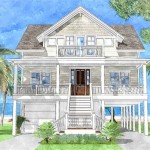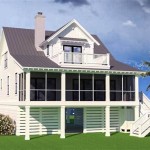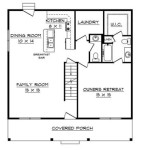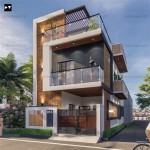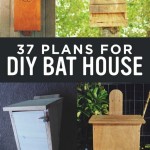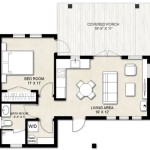Plans for Bluebird House refer to detailed instructions and schematics designed to guide the construction of shelters specifically tailored for bluebirds, North American birds known for their vibrant blue plumage. These plans provide step-by-step instructions, material lists, and diagrams to assist individuals in creating nesting boxes that cater to the unique needs of bluebirds, promoting their breeding and population growth.
Bluebird houses are essential conservation tools, as they provide safe and suitable nesting sites for these birds, which face challenges due to habitat loss and competition for nesting cavities. By providing plans for Bluebird House, organizations and individuals contribute to the preservation of bluebird populations, helping to maintain the ecological balance and enrich the natural beauty of their habitats.
In the following sections, we will delve into the details of Plans for Bluebird House, exploring the materials required, construction techniques, and best practices for installing and maintaining these nesting boxes to optimize their effectiveness in supporting bluebird conservation efforts.
When designing and constructing a bluebird house, several key considerations should be taken into account to ensure its effectiveness and suitability for the intended occupants:
- Entrance hole size
- Ventilation
- Drainage
- Predator protection
- Proper placement
- Regular maintenance
- Avoidance of toxic materials
- Encouraging nesting
Adhering to these guidelines will result in a well-crafted bluebird house that provides a safe and comfortable nesting environment, promoting the breeding success and population growth of these beautiful birds.
Entrance hole size
The entrance hole size is a critical aspect of bluebird house design, as it directly relates to the species of bluebird that will utilize the nesting box. Different bluebird species have specific preferences for entrance hole size, and using the appropriate dimensions is essential for ensuring their acceptance and successful nesting.
- Eastern Bluebird: 1 1/2 inches in diameter
This size is suitable for Eastern Bluebirds, the most common species found throughout the eastern United States.
- Western Bluebird: 1 9/16 inches in diameter
Western Bluebirds, primarily found in the western United States, prefer a slightly larger entrance hole size.
- Mountain Bluebird: 1 1/2 inches in diameter
Mountain Bluebirds, inhabiting mountainous regions of the western United States, share the same entrance hole size preference as Eastern Bluebirds.
- Mexican Bluebird: Small entrance hole around 1 inch in diameter
Mexican Bluebirds, found in the southwestern United States and Mexico, prefer a smaller entrance hole size.
Using the correct entrance hole size helps prevent larger birds, such as House Sparrows or European Starlings, from entering and potentially harming bluebird eggs or chicks. Additionally, it helps protect the nesting bluebirds from predators that may attempt to enter the box.
Ventilation
Proper ventilation is crucial for maintaining a healthy environment inside the bluebird house. Adequate airflow helps prevent the build-up of moisture, which can lead to mold growth and respiratory issues for the nesting birds. Bluebirds prefer dry nesting cavities, and proper ventilation ensures that the nest remains fresh and comfortable.
To achieve optimal ventilation, incorporate ventilation holes or slots near the top of the bluebird house. These openings allow air to circulate freely, carrying away moisture and stale air. Ensure that the ventilation holes are not too large, as they could allow predators or inclement weather to enter the nesting box. A good rule of thumb is to have ventilation holes with a total area of about 1 square inch.
In addition to the ventilation holes, it is essential to avoid using materials that trap moisture. Natural materials like untreated wood or cedar are preferable to materials like vinyl or metal, which do not breathe and can create a humid environment inside the nesting box.
Regular cleaning and maintenance of the bluebird house are also important for ensuring proper ventilation. Remove old nesting material and droppings regularly to prevent the accumulation of debris that could block ventilation holes and create an unhealthy environment for the nesting birds.
Drainage
Effective drainage is paramount in bluebird house design to prevent water accumulation and maintain a dry nesting environment. Proper drainage helps protect the nesting birds and their eggs from moisture-related issues such as hypothermia, mold growth, and bacterial infections.
- Sloped roof: Design the roof of the bluebird house with a slight slope to encourage water runoff. Avoid flat roofs that may pool water and cause seepage into the nesting box.
- Drainage holes: Incorporate small drainage holes in the floor of the bluebird house. These holes allow excess water to drain out, preventing it from accumulating and creating a damp environment.
- Perches: Position the entrance hole and perches in a way that prevents rain from directly entering the nesting box. Overhanging roofs or angled perches can help keep the entrance dry.
- Avoid ground contact: Place the bluebird house on a post or platform elevated above the ground. This prevents water from splashing up from the ground and entering the nesting box during heavy rain or flooding.
Ensuring proper drainage in bluebird house plans is essential for the health and well-being of the nesting birds. By incorporating these drainage features, you can create a dry and comfortable environment that promotes successful nesting and fledging.
Predator protection
Protecting bluebird houses from predators is crucial for the safety and survival of nesting bluebirds and their young. Incorporating predator protection measures into your bluebird house plans helps deter predators and provides a safe haven for these cavity-nesting birds.
1. Elevated placement: Place the bluebird house on a post or platform at least 5 feet above the ground. This height makes it more difficult for ground predators, such as cats, raccoons, and snakes, to reach the nesting box.
2. Baffle or predator guard: Install a predator baffle or guard around the pole or post supporting the bluebird house. This creates a physical barrier that prevents predators from climbing up the pole and accessing the nesting box.
3. Smooth surfaces: Use materials that provide a smooth, non-climbable surface for the exterior of the bluebird house. Avoid using materials like rough-sawn lumber or materials with large gaps that could provide footholds for predators.
4. Reduced entrance hole size: Consider using a smaller entrance hole size (1 1/2 inches in diameter) to deter larger predators, such as squirrels, from entering the nesting box.
Proper placement
Choosing the right location
Proper placement of your bluebird house is essential to ensure its effectiveness and the safety of the nesting bluebirds. Consider the following factors when selecting a location:
- Open area: Bluebirds prefer open areas with scattered trees or shrubs. Avoid placing the house in dense vegetation or near buildings or other structures.
- Sunlight exposure: Bluebirds prefer nesting boxes that receive morning sunlight. This helps warm the nest and provides a comfortable environment for the chicks.
- Predator safety: Place the bluebird house away from potential predator hiding spots, such as dense bushes or trees with low branches.
Height and mounting
The bluebird house should be placed on a post or platform at least 5 feet above the ground. This height discourages ground predators, such as cats and raccoons, from reaching the nesting box. The post should be sturdy and securely anchored in the ground.
Avoid mounting the bluebird house directly on a tree trunk or branch. This provides an easy pathway for predators to climb up and access the nesting box.
Facing direction
The entrance hole of the bluebird house should face east or southeast. This orientation provides protection from prevailing winds and rain while allowing morning sunlight to enter the nesting box.
Spacing and proximity to other bluebird houses
If you are installing multiple bluebird houses, space them at least 300 feet apart to reduce competition between nesting pairs. Avoid placing bluebird houses too close to bird feeders or other areas of human activity, as this can deter bluebirds from using the nesting boxes.
Regular maintenance
Regular maintenance of bluebird houses is crucial to ensure their continued effectiveness and to provide a safe and suitable nesting environment for bluebirds. Here are some key maintenance tasks to keep in mind:
- Clean the nesting box: After each nesting season, remove the old nesting material and clean the nesting box thoroughly. This helps prevent the accumulation of parasites, diseases, and debris that could harm future nesting bluebirds.
- Inspect the nesting box: Regularly inspect the nesting box for any damage or deterioration. Check for cracks, holes, or loose parts that could compromise the structural integrity of the nesting box or allow predators to enter.
- Repair or replace the nesting box: If the nesting box is damaged beyond repair, replace it with a new one. If the damage is minor, you may be able to repair it using appropriate materials and techniques to ensure the continued functionality of the nesting box.
- Remove invasive species: Invasive species, such as House Sparrows or European Starlings, can compete with bluebirds for nesting cavities. Regularly monitor the nesting box for signs of these invasive species and take appropriate measures to deter or remove them to protect the bluebird population.
Avoidance of toxic materials
When constructing or selecting materials for bluebird houses, it is imperative to prioritize the avoidance of toxic materials to ensure the health and safety of bluebirds and other wildlife. Certain materials can release harmful chemicals or fumes that can be detrimental to the well-being of nesting birds and their young.
- Pressure-treated wood: Pressure-treated wood is commonly used for outdoor projects due to its resistance to rot and decay. However, the chemical preservatives used in pressure treatment, such as chromated copper arsenate (CCA) or alkaline copper quaternary (ACQ), can be toxic to birds. Avoid using pressure-treated wood for the construction of bluebird houses or any components that come into direct contact with the birds.
- Creosote: Creosote is a wood preservative that is highly toxic to birds. It is commonly used for railroad ties and utility poles but should never be used in or around bluebird houses or other bird nesting structures.
- Lead-based paint: Lead is a highly toxic metal that can cause neurological damage and other health issues in birds. Avoid using lead-based paint on bluebird houses or any surfaces that birds may come into contact with.
- Galvanized metal: Galvanized metal can release zinc, which is toxic to birds. Avoid using galvanized metal for roofing or other components of bluebird houses that may come into contact with nesting birds or their eggs.
By carefully selecting materials and avoiding toxic substances, you can create a safe and healthy nesting environment for bluebirds and contribute to their conservation and well-being.
Encouraging nesting
Encouraging bluebirds to nest in your bluebird houses is a crucial aspect of bluebird conservation efforts. By providing suitable nesting sites and implementing specific strategies, you can increase the chances of bluebirds successfully nesting and raising their young.
- Provide nesting material: Bluebirds typically use soft materials such as grass, pine needles, and feathers to build their nests. You can provide a nesting material starter kit by placing a small amount of these materials inside the nesting box. Avoid using synthetic materials, as they can be harmful to the birds.
- Create a nesting cavity: Bluebirds prefer nesting in cavities that are about 6 inches deep and 4 inches wide. The entrance hole should be about 1 1/2 inches in diameter. If you are building your own bluebird house, ensure that the dimensions and entrance hole size are appropriate for bluebirds.
- Place the nesting box in a suitable location: Bluebirds prefer nesting in open areas with scattered trees or shrubs. Avoid placing the nesting box in dense vegetation or near buildings or other structures. The nesting box should be placed on a post or platform at least 5 feet above the ground to deter predators.
- Monitor the nesting box: Once you have installed the bluebird house, monitor it regularly to check for signs of nesting activity. If you observe bluebirds visiting or entering the nesting box, avoid disturbing them. You can also use a trail camera to monitor the nesting box without disturbing the birds.
By implementing these strategies, you can create a welcoming and suitable nesting environment for bluebirds, enhancing their chances of successful breeding and population growth.










Related Posts

